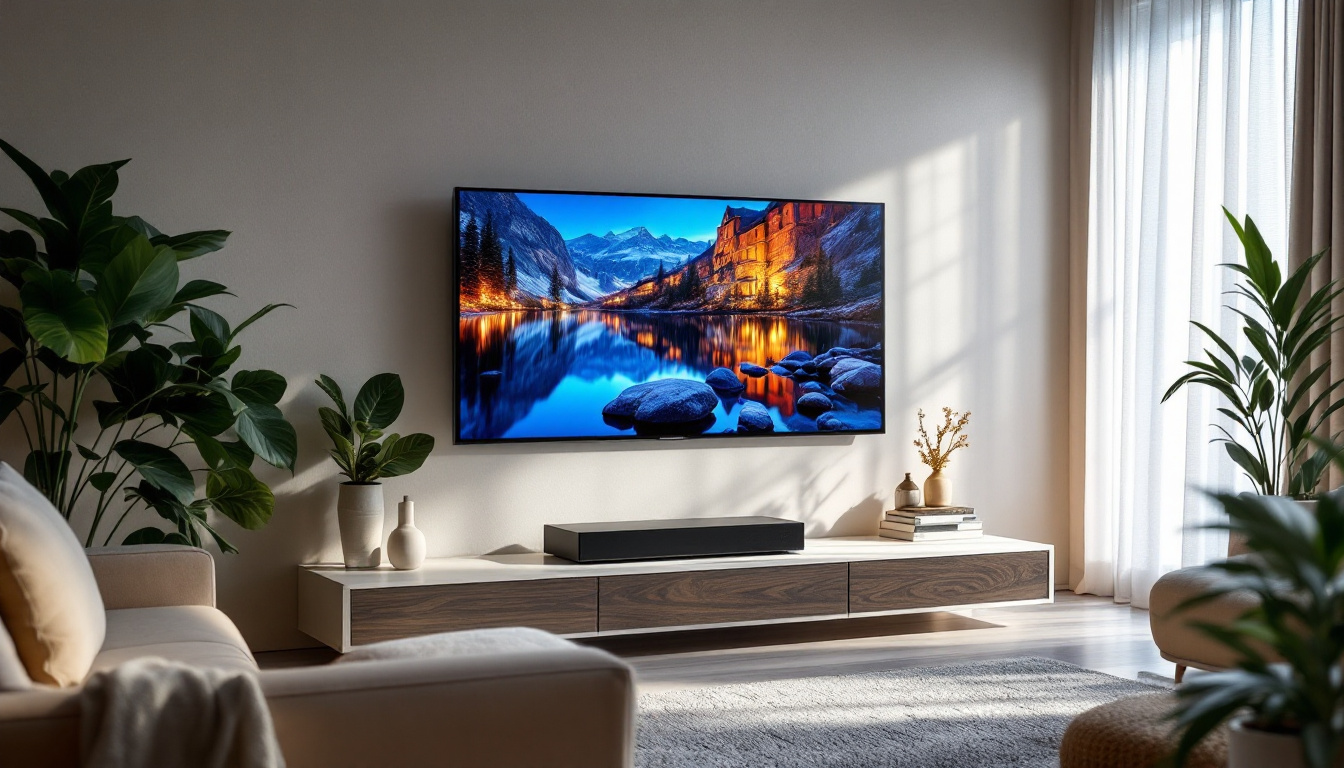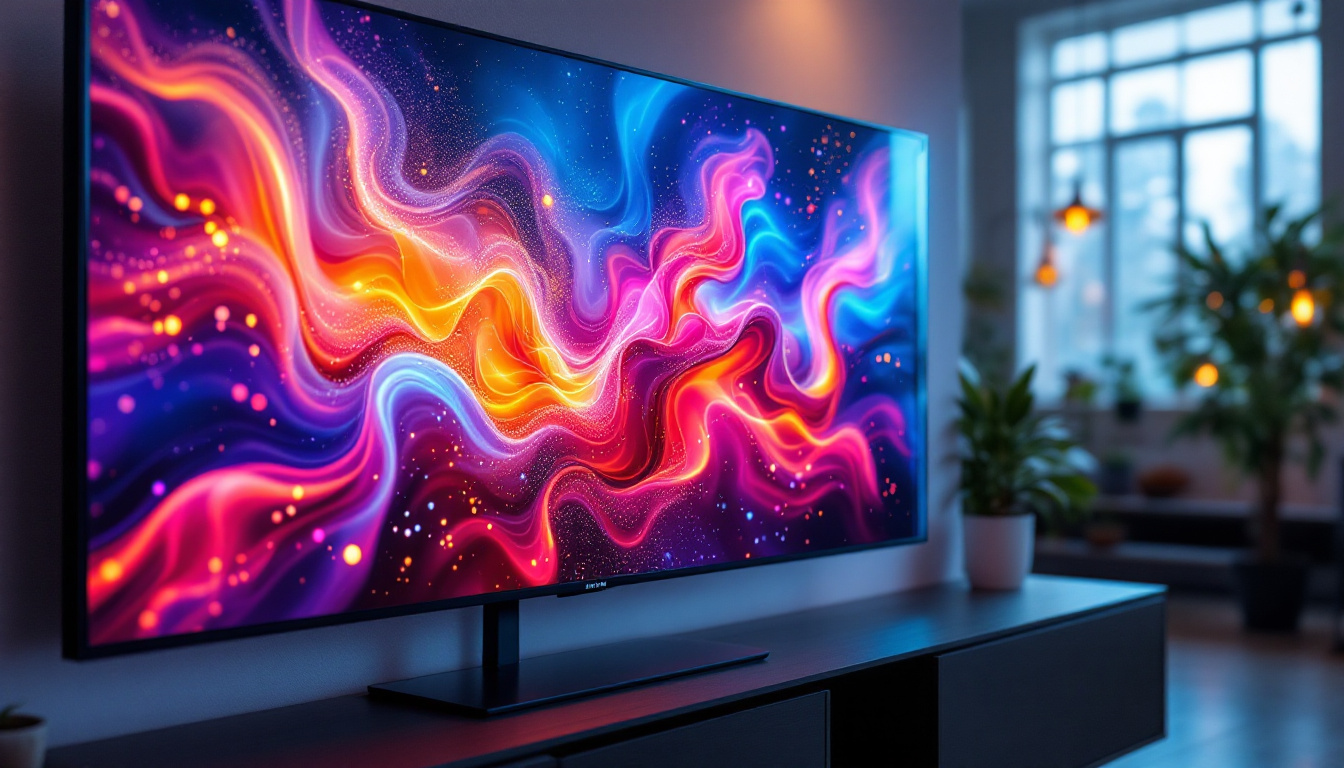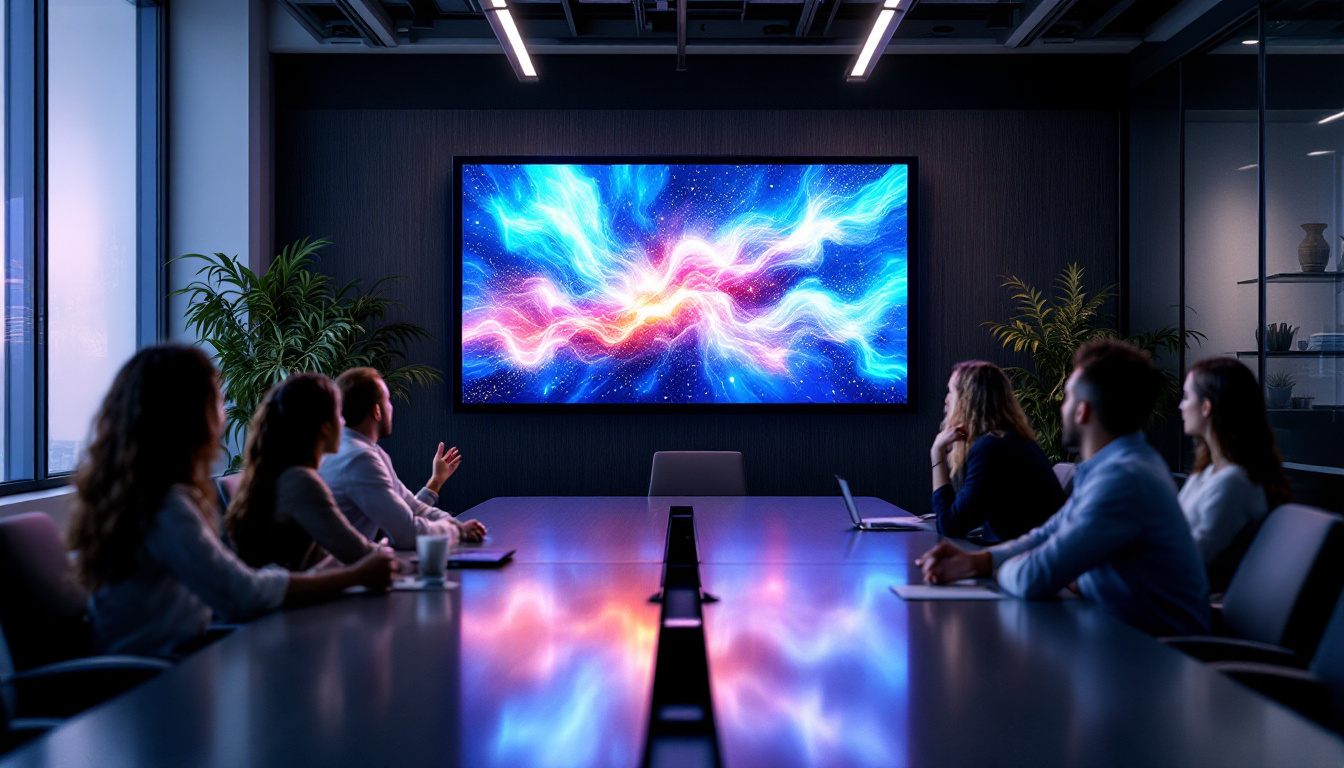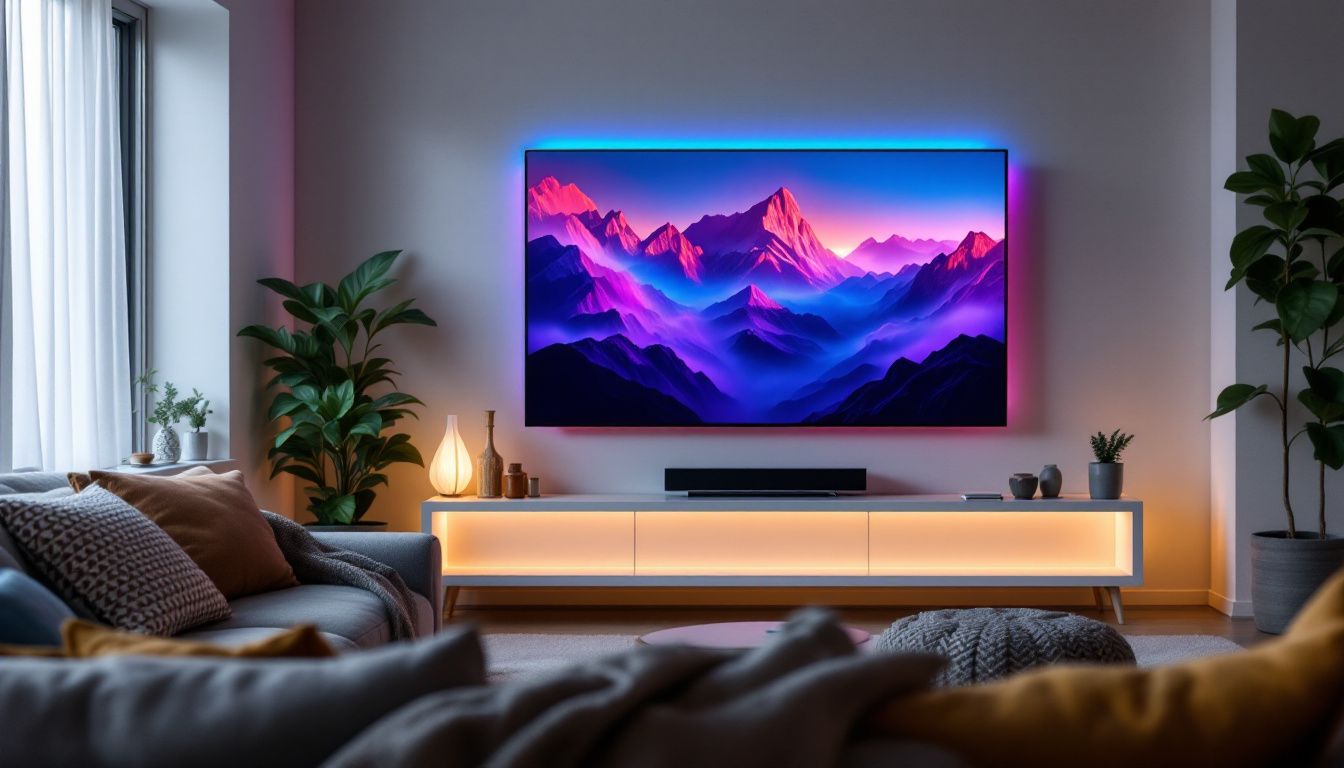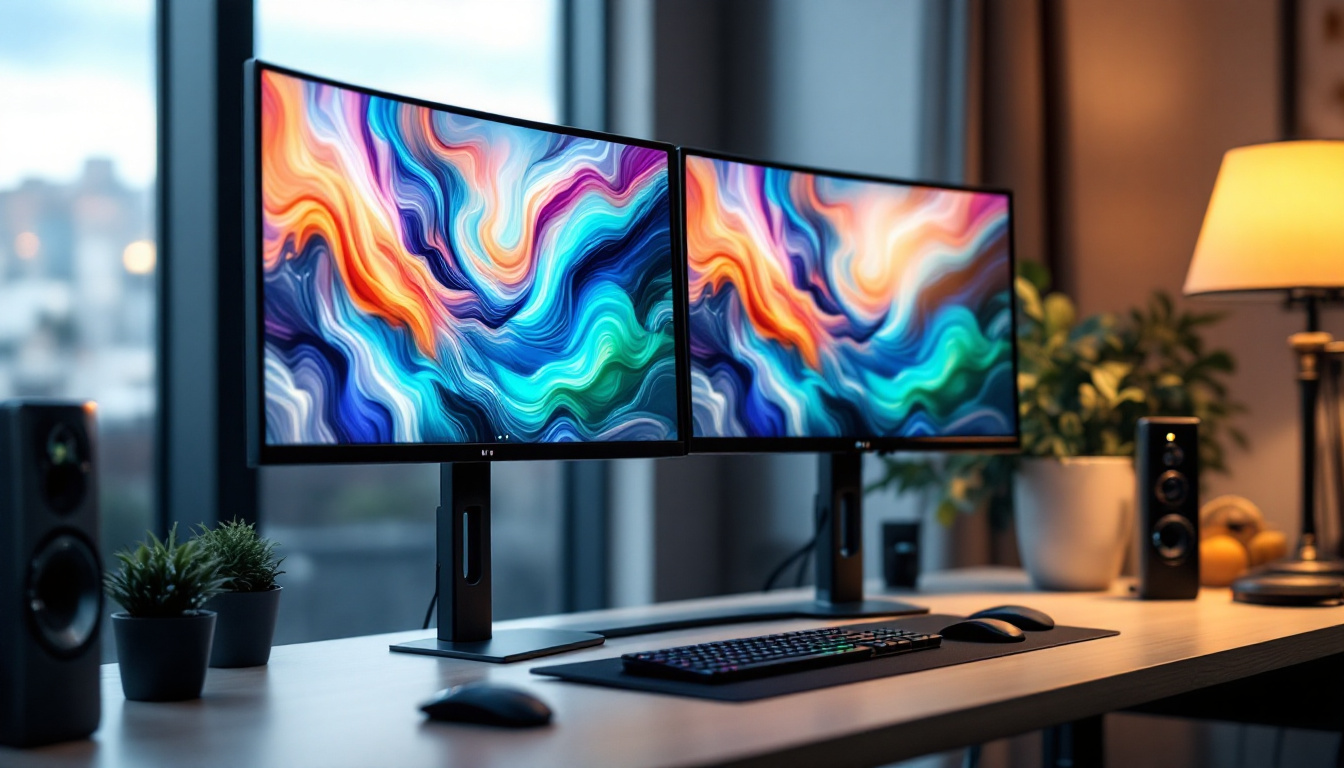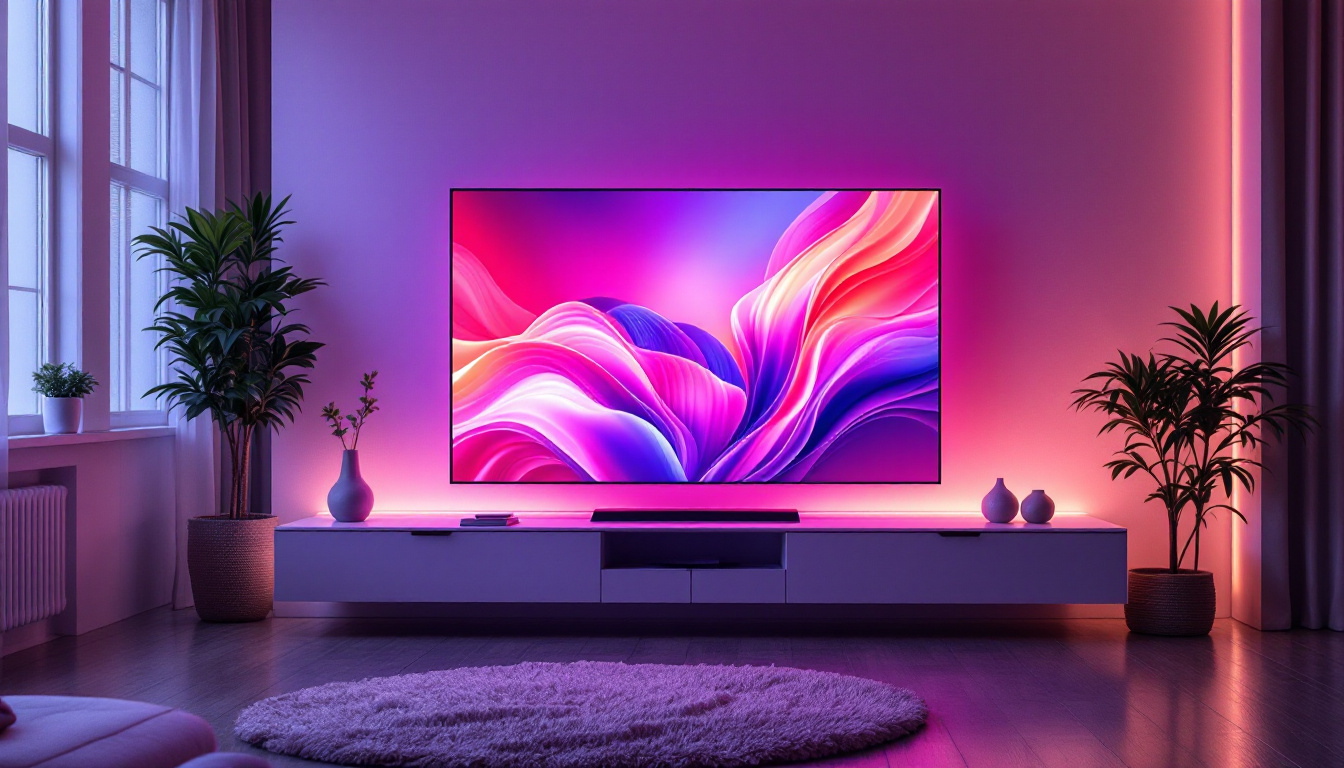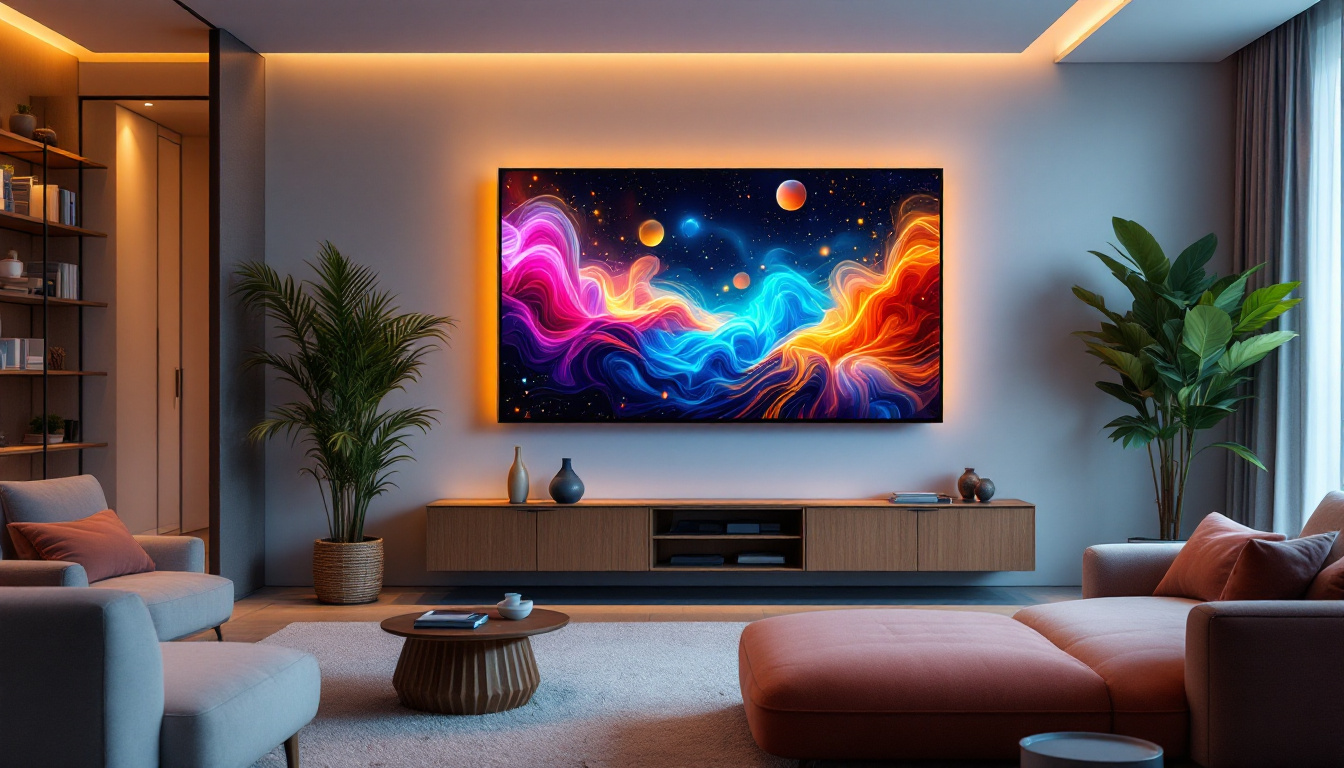Do They Make Touch Screen TVs: LED Display Explained
In recent years, the evolution of technology has led to the creation of various innovative devices that enhance user experience. One such advancement is the touch screen television, which combines the functionality of a traditional TV with the interactivity of a touchscreen device. This article delves into the world of touch screen TVs, particularly focusing on LED display technology, and explores their features, benefits, and potential applications.
Understanding Touch Screen Technology
Touch screen technology has revolutionized how users interact with devices. Unlike conventional televisions that rely solely on remote controls, touch screen TVs allow viewers to engage directly with the screen. This interaction can range from simple gestures, like tapping and swiping, to more complex commands. The convenience of touch screens has made them ubiquitous in various settings, from homes to public spaces, enhancing user engagement and satisfaction.
How Touch Screen TVs Work
Touch screen TVs utilize a combination of hardware and software to detect user input. The screen is embedded with a touch-sensitive layer that registers touch points. When a user touches the screen, the device interprets the input and responds accordingly. This technology can be capacitive, resistive, or optical, each offering different levels of sensitivity and accuracy. Capacitive touch screens are the most common in modern devices, including smartphones and tablets. They work by detecting changes in electrical fields when a finger approaches the screen. On the other hand, resistive screens require pressure to register a touch, making them less responsive but often more affordable. Optical touch screens use cameras to detect touch, providing a different approach to interaction.
In addition to these primary technologies, advancements in touch screen capabilities continue to emerge. For instance, multi-touch technology allows for the detection of multiple touch points simultaneously, enabling more complex gestures such as pinch-to-zoom or rotating images. This feature is particularly useful in applications that require precision, such as graphic design or gaming. Furthermore, the integration of haptic feedback technology enhances the user experience by providing tactile responses to touch inputs, making interactions feel more intuitive and engaging.
Benefits of Touch Screen TVs
Touch screen TVs offer several advantages over traditional models. First and foremost, they provide a more interactive viewing experience. Users can easily navigate through menus, select content, and control settings without needing a remote. This can be particularly beneficial in educational settings or for presentations, where quick access to information is crucial. The ability to directly manipulate content on the screen can lead to a more immersive learning experience, as students can engage with material in a hands-on manner.
Additionally, touch screen TVs can enhance social interaction. In a family setting, multiple users can engage with the screen simultaneously, making it an excellent tool for games, collaborative projects, or shared viewing experiences. This interactivity fosters a sense of togetherness, as everyone can participate in the activity at hand. Moreover, touch screen technology can also facilitate accessibility for individuals with disabilities, allowing them to interact with media in ways that traditional remotes may not accommodate. The intuitive nature of touch screens can empower users to navigate content more easily, creating a more inclusive environment for all viewers.
LED Display Technology Explained
LED (Light Emitting Diode) technology has become the standard for modern televisions, including touch screen models. Understanding how LED displays work is essential for appreciating the quality and performance of these devices.
What is LED Display Technology?
LED displays use a series of light-emitting diodes to create images on the screen. Unlike traditional LCD screens that rely on fluorescent backlighting, LED displays provide a more energy-efficient and brighter alternative. This technology allows for thinner screens and improved color accuracy, making LED TVs a popular choice among consumers.
There are two primary types of LED displays: edge-lit and full-array. Edge-lit LED TVs have LEDs placed around the perimeter of the screen, while full-array models feature a grid of LEDs behind the entire display. Full-array technology typically offers better contrast and uniformity in brightness, enhancing the overall viewing experience. Furthermore, advancements in local dimming technology have allowed full-array displays to selectively dim certain areas of the screen, resulting in even greater contrast and depth in images, particularly in dark scenes.
Advantages of LED Displays
LED displays come with numerous advantages that contribute to their popularity. One significant benefit is their energy efficiency. LED TVs consume less power than traditional models, leading to lower electricity bills and a reduced environmental impact.
Moreover, LED displays provide superior brightness and contrast ratios. This means that colors appear more vibrant, and blacks are deeper, offering an enhanced viewing experience, especially in well-lit environments. Additionally, LED technology supports high dynamic range (HDR), which further improves color accuracy and detail in both bright and dark scenes. The HDR capability allows viewers to experience a wider range of colors and brightness levels, making images more lifelike and immersive. As a result, filmmakers and content creators are increasingly producing HDR content, making it essential for consumers to invest in LED displays that can fully utilize this technology.
Another advantage of LED displays is their longevity. Compared to traditional cathode ray tube (CRT) televisions, LED screens have a much longer lifespan, often exceeding 50,000 hours of use. This durability not only translates to cost savings over time but also reduces electronic waste, contributing to a more sustainable future. Furthermore, the lightweight and slim profile of LED displays make them easier to mount on walls or move around, providing flexibility in home entertainment setups. As technology continues to evolve, we can expect even more innovations in LED display technology, further enhancing our viewing experiences.
Touch Screen TVs: The Intersection of Technology
The combination of touch screen technology and LED displays has resulted in a new generation of televisions that cater to various needs and preferences. These devices are not just about passive viewing; they encourage active participation and engagement.
Applications in Education
Touch screen TVs are increasingly being adopted in educational settings. They serve as interactive whiteboards, allowing teachers to present information dynamically. Students can engage directly with the content, whether it’s through collaborative projects, quizzes, or interactive lessons. This hands-on approach can enhance learning outcomes and keep students more engaged.
Furthermore, the ability to connect to various educational apps and resources makes touch screen TVs a versatile tool in the classroom. Educators can easily access multimedia content, making lessons more engaging and informative.
Home Entertainment and Gaming
In the realm of home entertainment, touch screen TVs offer a unique experience for gaming enthusiasts. The interactive nature of these devices allows for new gameplay mechanics, enabling players to control games through touch gestures. This can lead to more immersive experiences, particularly in multiplayer settings where collaboration is key.
Moreover, streaming services can be navigated effortlessly, allowing users to browse through content quickly. The convenience of touch controls enhances the overall viewing experience, making it easier to find and enjoy favorite shows and movies.
Considerations When Choosing a Touch Screen TV
While touch screen TVs offer many benefits, there are several factors to consider before making a purchase. Understanding these considerations can help consumers choose the right model for their needs.
Screen Size and Resolution
Screen size and resolution are critical factors when selecting a touch screen TV. Larger screens provide a more immersive experience, but they also require more space. Additionally, resolution plays a significant role in picture quality. 4K resolution has become the standard for high-definition displays, offering four times the detail of 1080p. When choosing a touch screen TV, it’s essential to balance screen size with available space and desired resolution.
Touch Sensitivity and Responsiveness
Not all touch screen TVs are created equal when it comes to sensitivity and responsiveness. Some models may lag or fail to register touch inputs accurately, leading to frustration during use. It’s advisable to test different models in-store or read reviews to gauge performance before making a decision. A responsive touch screen enhances user experience and makes navigation seamless.
Future Trends in Touch Screen TV Technology
The future of touch screen TVs is promising, with advancements in technology paving the way for even more innovative features. As manufacturers continue to explore new possibilities, several trends are emerging that could shape the future of these devices.
Integration with Smart Home Systems
As smart home technology becomes increasingly prevalent, touch screen TVs are likely to integrate more seamlessly with other smart devices. This could allow users to control lighting, security systems, and other connected devices directly from their TV screens. Such integration would enhance convenience and create a centralized hub for managing smart home functionalities.
Enhanced User Interfaces
Future touch screen TVs may also feature improved user interfaces designed for touch interaction. This could include customizable layouts, gesture controls, and voice recognition capabilities, making navigation more intuitive. As technology evolves, the user experience will likely become more tailored to individual preferences, allowing for a more personalized viewing experience.
Conclusion
Touch screen TVs represent a significant evolution in television technology, blending the interactive capabilities of touch screens with the high-quality visuals of LED displays. With their numerous benefits, including enhanced interactivity, energy efficiency, and improved viewing experiences, these devices are becoming increasingly popular in various settings, from homes to classrooms.
As technology continues to advance, the future of touch screen TVs looks bright. With potential integrations into smart home systems and enhanced user interfaces, these devices are set to redefine how viewers engage with content. Whether for entertainment, education, or social interaction, touch screen TVs offer a glimpse into the future of television technology.
Discover LumenMatrix’s Innovative Touch Screen Solutions
Ready to experience the future of television technology with an interactive touch screen TV? LumenMatrix, a pioneer in LED display innovation, invites you to explore our comprehensive range of LED display modules. From the comfort of your home to the excitement of outdoor events, our solutions like Indoor LED Wall Displays, Outdoor LED Wall Displays, and Custom LED Displays are designed to elevate your visual experience. Immerse yourself in the world of vibrant, energy-efficient displays that are perfect for any application. Check out LumenMatrix LED Display Solutions today and transform how you engage with digital content.

